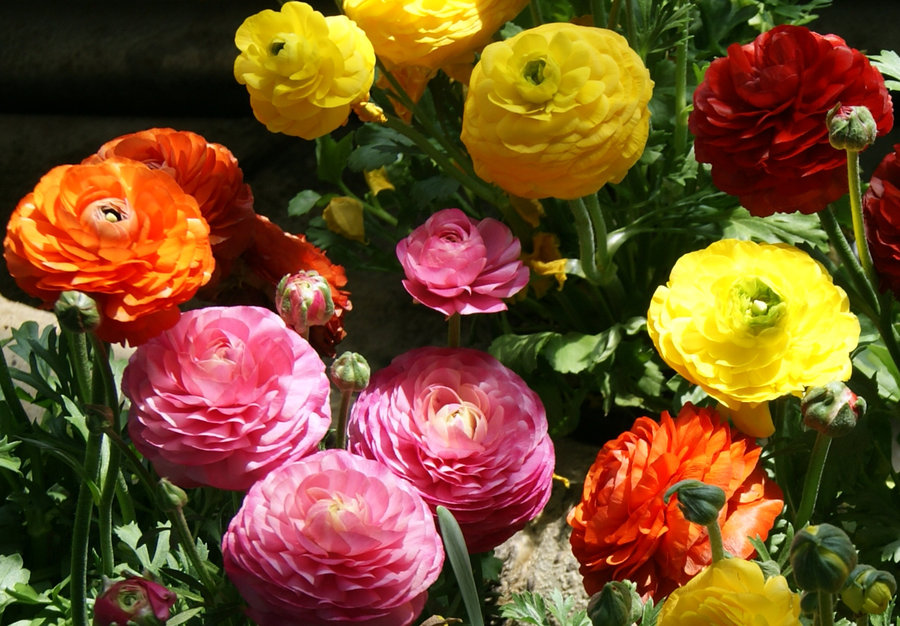History? No, I’ll not bore you. The buzz is all about flowers and its unspoken history. Everything that exists has its own history, like why they’re so. It makes me amaze that in an evolution of planet there were drastic changes, so did the same affect flowers? Scientists have given rough figure around 2,70,000 species of flowers are documented up till now. But still, some questions are a big puzzle for them to be clearly answered. Let’s briefly deliberate on origins of flowers.

Aster : Till now, 600 species of aster are available on earth. Older people believed that the smell of aster (after burning) can keep the snakes away. The English have given two names to the flower. The first name is asters which are Latin word and it means star. The name belongs to its star-like shape. The second name is starworts. In which, worts means root that indicates plants having healing properties. Asters are one of the demanded flowers and you can get Same Day Flowers by Flower Station with extremely fresh look.
Calendula : The calendula was valued more as a herb rather than its beauty that brighten up in yellow color. These flowers are a member of the marigold family. The Romans used these flowers with vinegar to make their meat and salad tasty. Besides this, calendula was also used in ointments that cured skin irritations, toothaches and beneficial in soothing indigestion. Years ago, Christians called this flower a Mary’s Gold. And endowed it to the statues of Mary.
The surprising fact is that it’s genius name is wor calendae, which means throughout the months. As the name suggests, it is available throughout the blossoming months. Its heads follow the sun same as a sunflower.
Carnation : Flower name carnation comes from Greece. Like carnis which means flesh, refers to the actual color of the flowers. Or probably the word carnation denotes the incarnation of god. The flower was also called dianthus, might be because they were popular by Greek botanist named theopharastus. He used carnations in Greek ceremony as a crown.
Daisy : The flower daisy’s English name was day’s eye which implies to the way the flower opens and closes with the sun. And after a research, the experts have reached to a conclusion that the flower was essential to cure eye troubles. There were some people who crushed daisies and mixed them with oil and applied to color their grey hair to dark again. Daisies were also called Marguerite which is a French word, derived from Greek word, which means a pearl. It was used in curing stomach-ulcer pain and also helped to cure insanity by steeping it into wine and consuming for 15 days.
Orchid : Orchid word originates from Greece. It is derived from word orchis which means testicle. Some orchids are called lady’s finger or long purples. It is related with so many myths. One of them was, Greece women believed that if the father of their unborn baby ate large new tubers then the baby would be a boy and if same did mother and ate small tuber, a baby would be a girl. So myth-full, right? Around the 19th century, orchids were collected in wide amount. Now, there are approx 25,000 varieties of orchids available. Botanists are fascinated by the flowers’ reproductive characteristics. Orchids are most expensive, elegant and rarest flowers nowadays.
Alstroemeria : Alstroemeria, the name comes after the famous Swedish botanist Baron Klas von Alstroemer. The seeds of Alstroemeria (a south American flower) were collected by von Alstroemer on his trip to Spain in 1753. After that, these flowers have become an attraction. These flowers symbolize friendship and devotion and the twists of it indicate tribulations of friendships. Interesting factor of these flowers is that they do not have fragrance.
History has so many shades just like flowers. Flowers aren’t just spreading beauty, creating decorations too. They also act as a weapon to cure problems like ulcer, eye problems and more.
Every single object has its own past and it makes me curious to know. Still more to be disclosed, Read curiously!..

